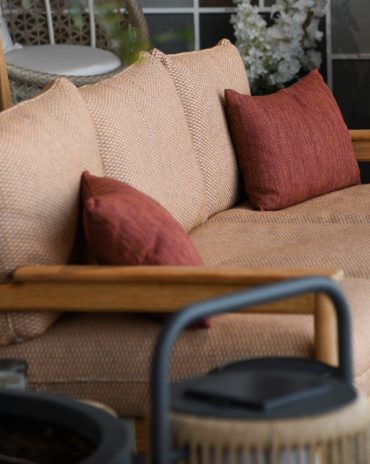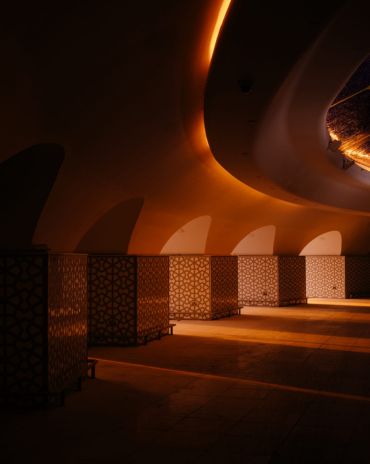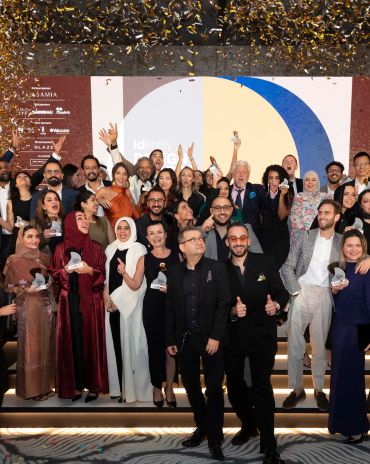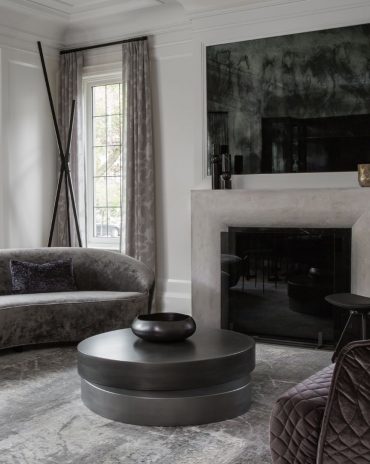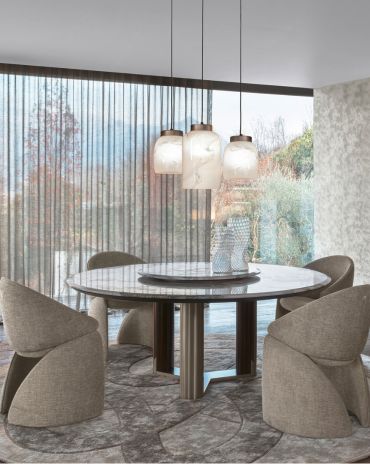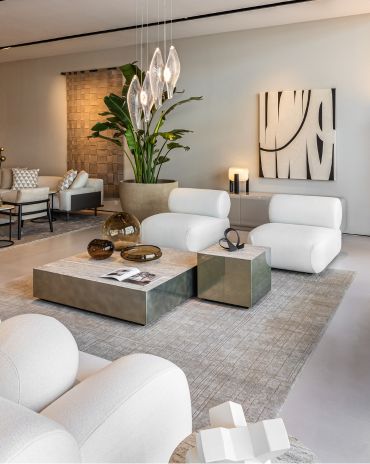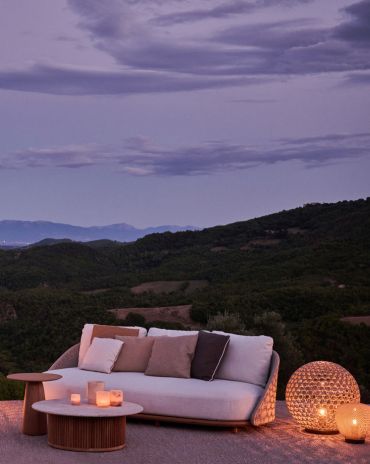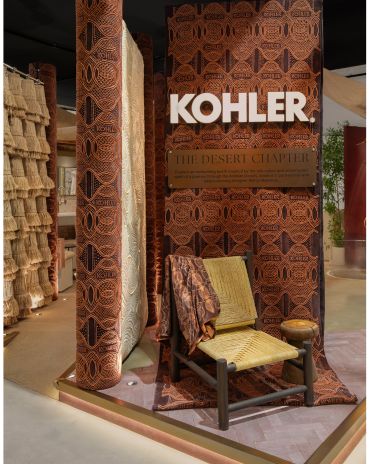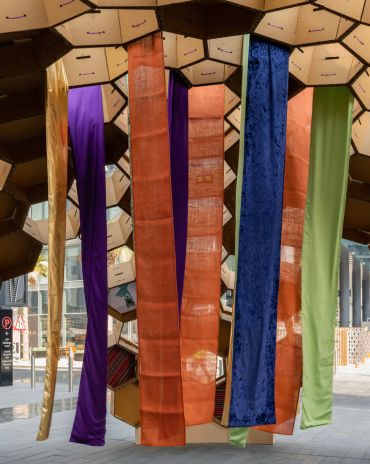Copyright © 2025 Motivate Media Group. All rights reserved.
Self-taught designer Mircea Anghel experiments and expresses himself through wood
The Romanian-born designer finds freedom in woodworking
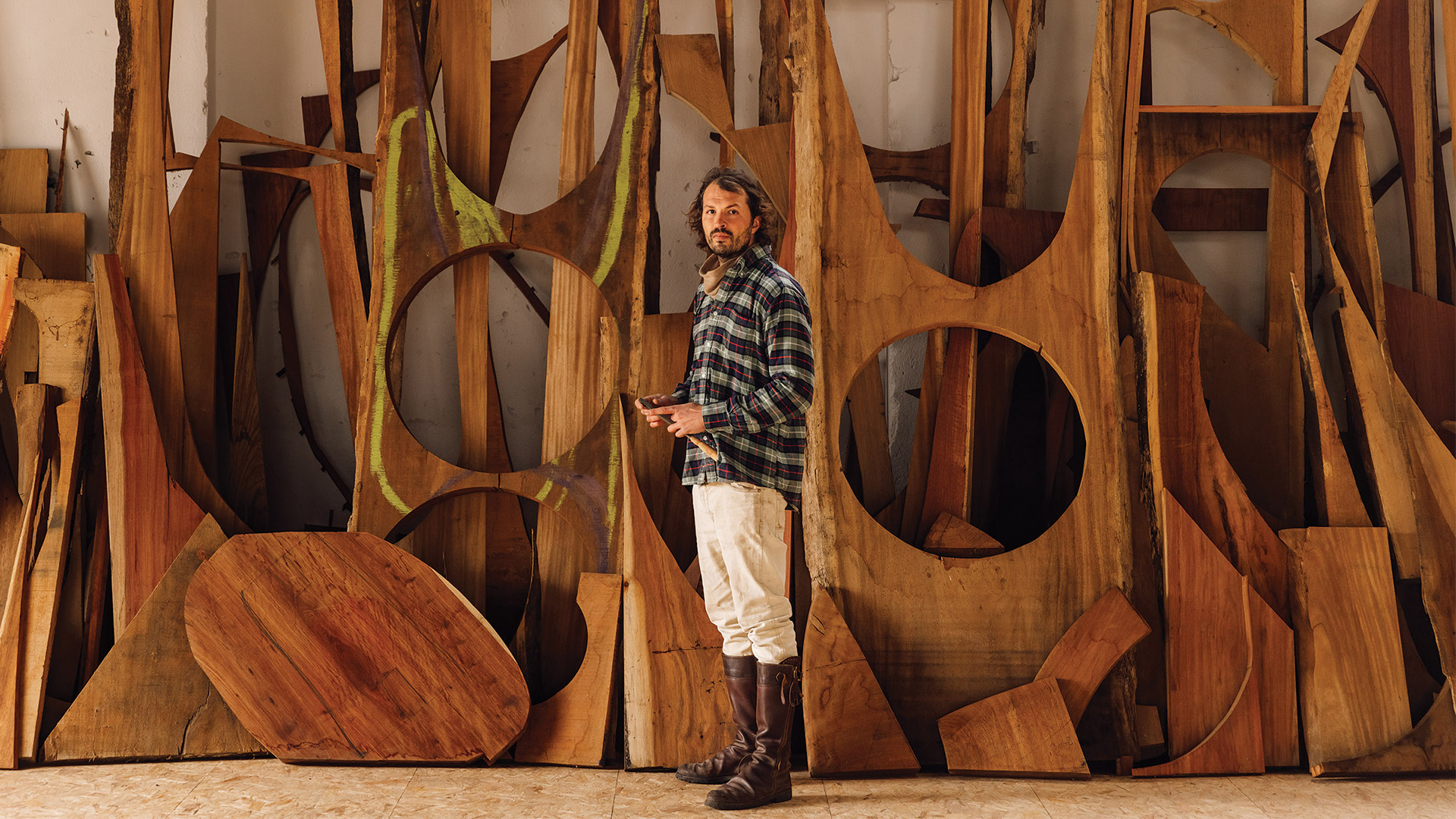
While working in finance as a trader, Mircea Anghel felt the urge to find something in his life that would grant him freedom. This is how he started woodworking. “Things just flowed, and I became more and more interested, and keen to develop my skills,” he remembers. Today, what was first a hobby has transformed into not only a passion, but also a career.
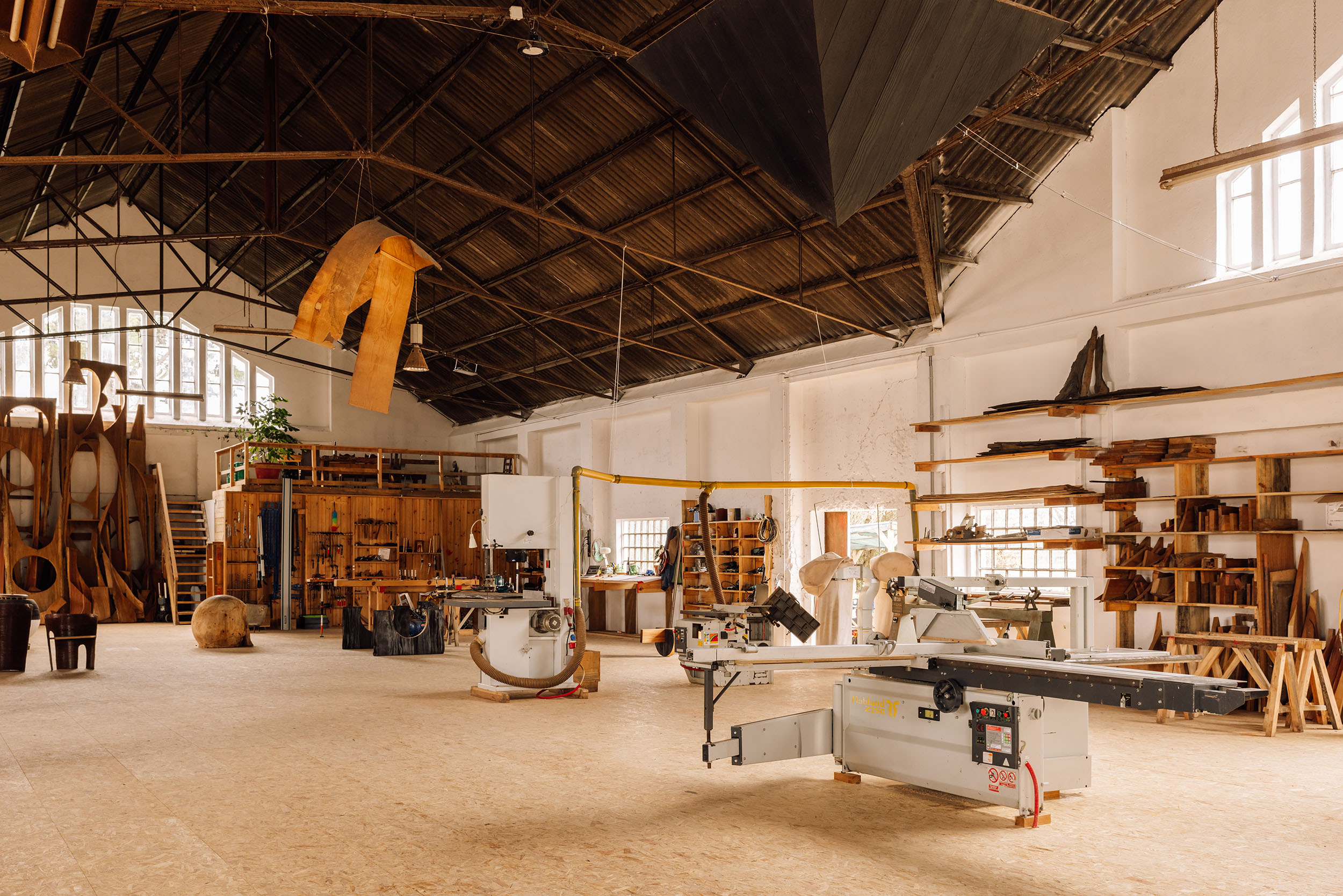
Originally from Romania, a country he describes as “full of craft culture and history”, Anghel has spent the past 23 years living in Portugal, where he founded Cabana Studio. While inspired by the work of George Nakashima, Constantin Brâncuși, Wendell Castle, Isamu Noguchi and Alexander Calder, he doesn’t feel like a follower of any of them.
“We are very experimental in my studio, and we aim to create objects that feed back into our design process and form a sort of source material, from which we draw inspiration,” says Anghel. “Paper folding, vacuums, explosions, fire and other processes are used to make small tests that create a language, informing our finished pieces.”

Located on the rural estate of Herdade da Barrosinha, in Alcácer do Sal, with views of the Alentejo landscape including hills, vineyards, rice fields and mills among cork trees, Anghel’s studio is about one hour south of Lisbon. Comprising two old rice husking and packaging factories, a former primary school, a canteen, the sawmill and the mills built on the right bank of the Sado River, it will open this summer (starting in June) to the public for the first time, showcasing several of Anghel’s iconic pieces. In parallel, a show of new works will launch at the Francisco Fino Gallery in Lisbon.

Wood is at the centre of Anghel’s process, but for the past three years the designer has started to introduce more materials and techniques – including stone, metal, copper, paper, fabric and resins – simultaneously honouring an innovative spirit and age-old techniques.
“I tend to reflect upon a particular piece of wood for months or even years, contemplating its form and trying to uncover its hidden beauty and aesthetic,” Anghel confesses. “Through my craftsmanship, I reveal the object trapped within.”
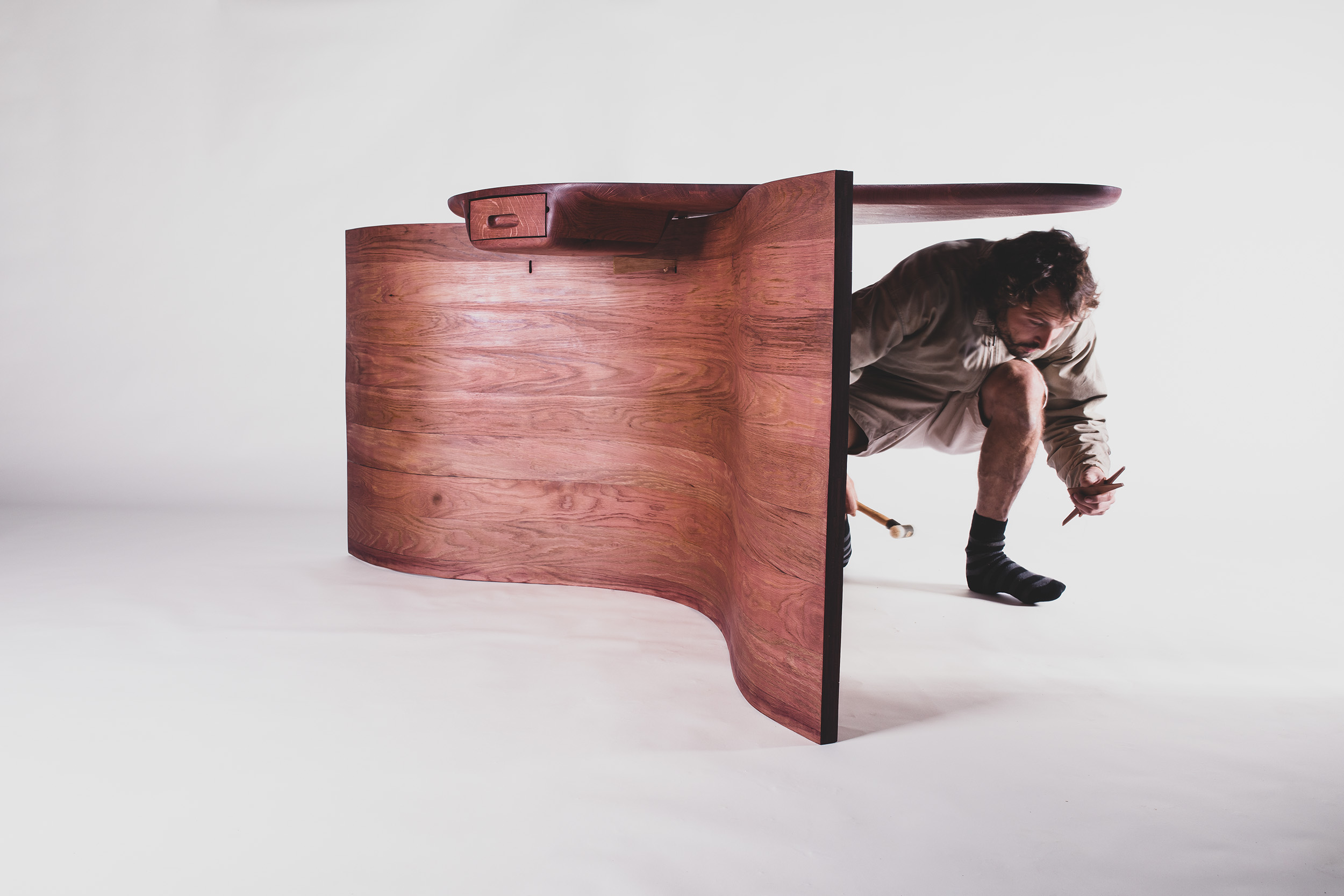
Entirely handmade, his gravity-defying creations are about balance, mathematics (a lifelong interest of Anghel’s, reflected through his work by the presence of an element of unpredictability) and equilibrium. “But right now, freedom is probably the most relevant attribute and what I’m looking for the most — and it’s quite strange because by definition, design and the necessity for usability in design create constraints,” he notes.

Always following the natural flow of the creative process, Anghel is influenced by the guiding principles of Japanese craftsmanship. In addition to his upcoming exhibitions this summer, the designer is currently working on several projects: an initiative aiming to revive the long Portuguese tradition of boat building, in collaboration with local shipwrights; and a project to launch a community of artists, designers, makers and scientists around his workshop, to encourage collaborative residencies for young creators. Adding to his busy schedule is the finalisation of the JAM Hotel in Lisbon with interior designer Lionel Jadot; collectible design pieces for Mix (a hotel, restaurant, library and gym, which will open in June) in Brussels; monumental bespoke pieces for a hotel in Comporta designed by Studio KO; and finally, a boat pier designed on the shores of Lake Como.
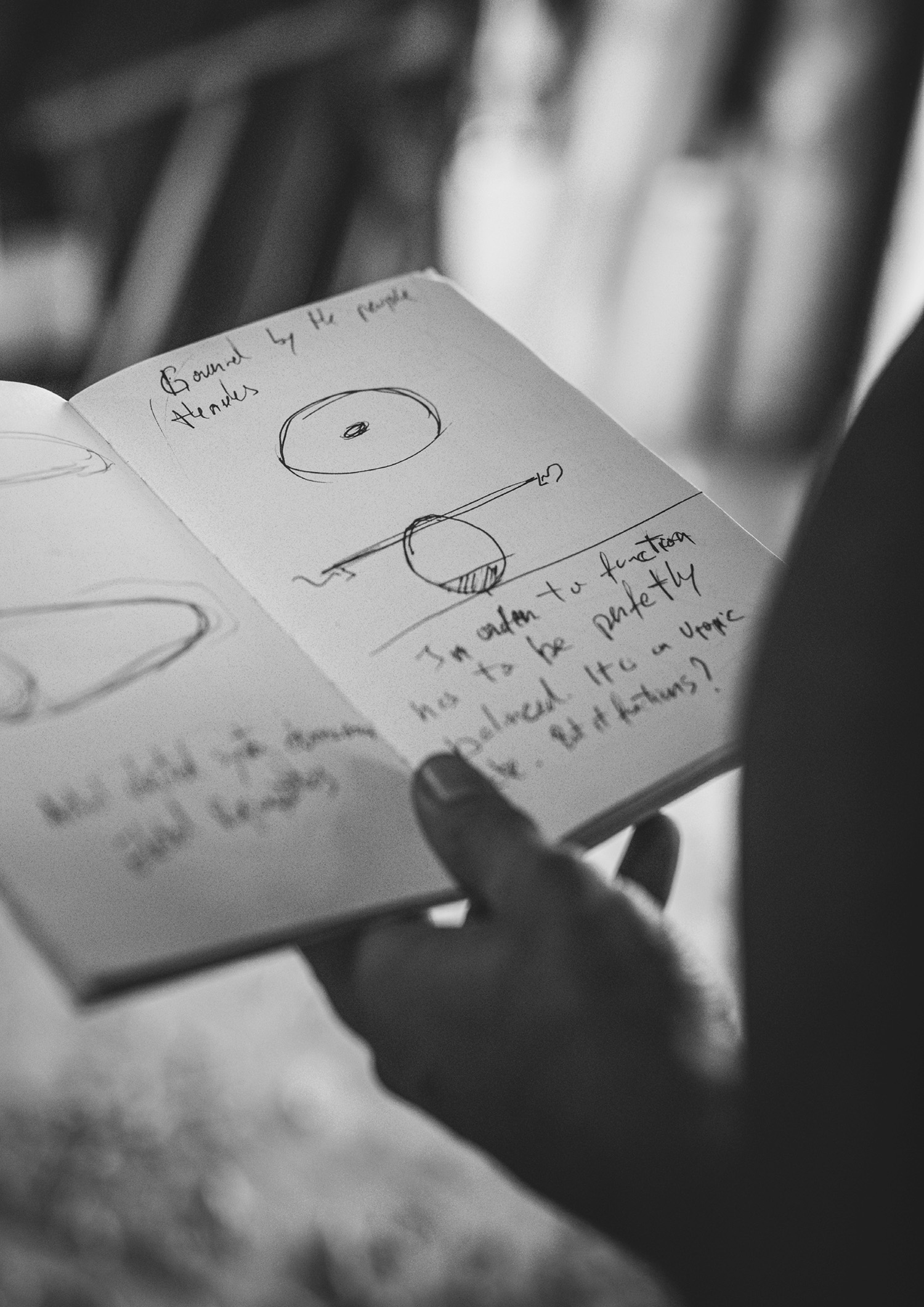
With so much work going on, Anghel sticks to his motto: “Don’t be afraid to try. Take notes and try again.”
The Latest
Outdoor Living, Redefined
Messara Living and Vincent Sheppard Unveil “Outdoor at Its Best 2026”
NOMAD Opens Its Doors in Abu Dhabi’s Iconic Terminal 1
A modernist landmark is reimagined as a global stage for collectible design, contemporary art, and cultural dialogue.
In photos: Winners at the identity Design Awards 2025
Presenting the winners of 2025 identity Design Awards.
Identity Design Awards 2025 – Winner’s List
Here are the winners of the identity design awards 2025
Hogg’s Hollow
Set along the bend of a quiet river and sheltered within a mature, tree-lined enclave of Toronto, this riverside residence offers a dialogue between structure and softness, restraint and warmth
Salone del Mobile.Milano Paints Riyadh Red
The “Red in Progress” installation marks a powerful first step toward the city’s full-scale 2026 edition
An interview with Fabio Masolo on the Giorgio Collection
A conversation on passion, timeless design, and bringing Italian craftsmanship to the world
European Design, Instantly Within Reach
In a city where design dreams often come with long lead times, Caspaiou brings a refreshing difference – luxury, curated and available now
Shaping Tomorrow’s Interiors
Here’s what awaits at the OBEGI Home showcase at Dubai Design Week
Maison Margiela Residences
Conceived by Carlo Colombo, these bespoke residences will be located on the Palm Jumeirah
The Desert Chapter by Kohler and Marco Maximus
A fusion of design, culture, and the colours of nature
Downtown Design 2025 – The Highlights
A showcase of innovation, craftsmanship, and design excellence





